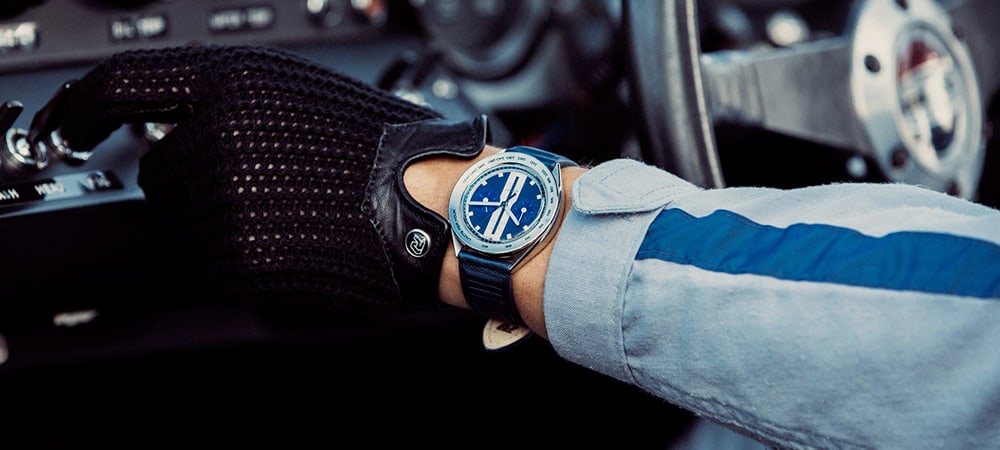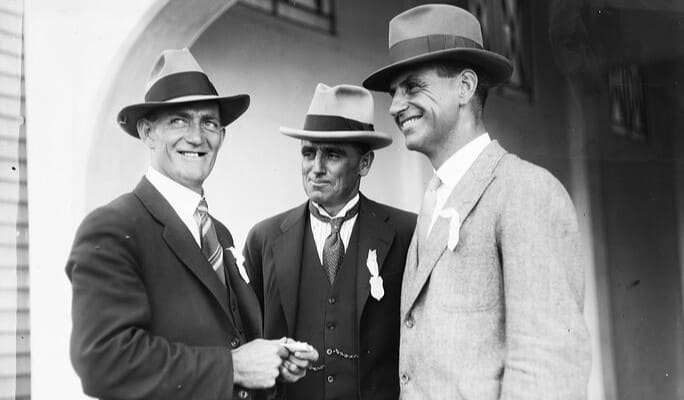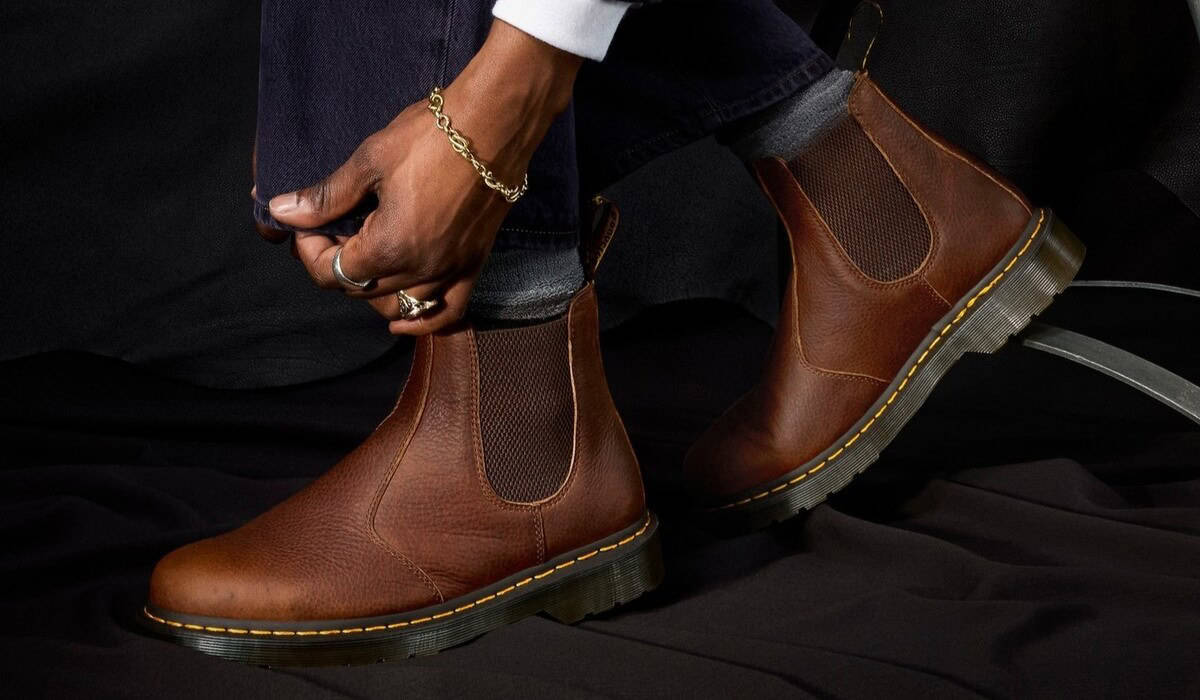1930s Men’s Fashion: A Timeless Guide To What Guys Wore
Jan 7, 2026Everything You Need To Know About Chronograph Watches
- Nov 25, 2023
- 0 Comments
547

Considering they’re basically jumped-up stopwatches, timepieces with a chronograph function definitely have something about them. Perhaps it’s the fact they’ve been integral to the history of automotive sport, aviation and space travel. Perhaps it’s that Paul Newman wore one (his 1968 Rolex Daytona recently became one of the most expensive wristwatches ever sold at auction, fetching $17.75m). Maybe they just look cool.
But what do they actually do and why are they so popular? Essentially a chronograph is a stopwatch. A pusher, usually found at two o’clock, sets a central seconds hand running. The same pusher is used to stop the seconds hand and another pusher at four o’clock resets back to 12. It’s a timer. Anything from 30 minutes to several hours depending on the model, with the seconds, minutes and hours logged on the watch’s subdials.
Yes, there are more complicated versions of it (a rattrapante, for example, has multiple seconds hands that can be stopped and started independently) but it’s essentially a mechanical way of timing anything from a 100m sprint to a perfectly boiled egg.
A chronograph’s charm isn’t all in the breakfast-friendly functionality, though. There’s something boys’ own about the look of them – clean and symmetrical but lots going on nonetheless. It’s hard not to think about a racing car’s dashboard or jet plane’s cockpit when you’re gazing at those subdials.
“I think there is something inherently attractive about chronograph dials. They’re aesthetically interesting and manage to be complicated while being very straightforward to read,” says Dr Rebecca Struthers, watchmaker and co-founder with husband Craig of Struthers London. “I once had a client say the reason they liked chronographs was that the centre seconds hand doesn’t run in normal operation so they look more serene.”
The History Of Chronograph Watches
The world’s oldest chronograph was only discovered in 2012. It’s called a ‘compteur de tierces’, or thirds counter. Built by watchmaker Louis Moinet in the 19th century, it had been referred to in historical texts but was thought lost.
When it surfaced again at an auction in Geneva, it kinda rewrote the history of time, being five years older than the next likely candidate. It was, of course, quite primitive by modern standards, but it marks the beginning of what is possibly the most popular style of men’s watch. https://www.youtube.com/watch?v=aup01MEV6Jg
In the years since, chronographs have synonymous with adventure. They have graced the wrists of pilots – Breitling’s 1942 Chronomat, for instance, was the first ‘slide-rule’ chrono, helping flyboys calculate anything from air speed to fuel consumption. The original Autavia, from what is today Tag Heuer, started life as a dashboard clock for rally cars. And a chronograph, the Omega Speedmaster, was not only the first watch on the moon but also saved the crew of Apollo 13 because the astronauts used them to time critical engine burns that got them safely back to earth.
However, despite this rich history, part of the charm is that they are, in relative terms, one of the most affordable watch complications on the market. You can find mechanical chronographs for under £500 and, if you know what you’re looking for, you could even get a vintage Speedmaster for £1,000.
What Should You Spend On A Chronograph?
When it comes to price, with a chronograph it’s worth knowing what you’re paying for as the mechanics have do have an effect. The first factor to consider is whether the chrono is a column wheel or cam-actuated.
Luxury watch brand Zenith, which produced the world’s first automatic chronograph, also had one of the first examples of a column-wheel function. This featured a mechanism that resembles a small castle turret in the movement. Each time the chronograph pusher is activated the turret rotates one increment. It requires a lot of care and attention to build and maintain this type of chrono, so expect to reach deep into your pockets.
Dropping the price is the cam-actuated chrono. Rather than using wheels it uses levers and arms that are meshed together and driven by a cam. It doesn’t have to be constructed in such a precise manner as a column wheel but does the job just as well. NASA certified a cam-actuated chrono, so who are we to argue?
The other difference in price tends to come with whether the chronograph is modular or integrated. As the word suggests, ‘modular’ implies a block of mechanics comprising the complication function that can be easily added to a base calibre. Aside from allowing brands to swap and change complications without having to remake entire movements, it’s great for watchmakers because you can service the hard-working elements of the movement – escapement, mainspring, winding system – without having to take apart the complication as well.
An integrated movement is just that: integrated, with everything enclosed in one calibre. Snobs believe these are better because integration takes more skill on the part of the watchmakers and developers. It does make for more beautiful views through the case back but it is harder to create, develop and service, which naturally drives up the price. The exception to this is the legendary Valjoux 7750, which is integrated, was invented in 1974 and doesn’t cost a fortune.
Styling Your Chronograph
Originally a chronograph was a sports watch, which made styling it pretty simple – just keep things casual. These days though, you can run the full gamut from dress to dive, which makes things a little more complex.
“I think chronographs are perfectly acceptable with a suit,” says Dan Rookwood, US editor of Mr Porter. “There are those purists who might disagree but they can take up the argument with James Bond if they like. Really the key consideration for a tailored look is whether or not you are wearing cufflinks. If not, carry on as you were. But if so, the watch should sit comfortably under the linked cuff. And that, of course, is more problematic with a bulkier timepiece.
“To my mind a chronograph makes an excellent choice as an everyday watch because it can be styled down as well as up so can be worn casually with chinos and a button-down or more formally with a suit. Strictly speaking one ought to wear a dress watch with formal evening wear; it’s just more elegant. But again, 007 often breaks that rule. I suppose Q can’t get all his gadgets in an Altiplano.”
How Should You Look After A Chronograph Watch?
Some people will never use a chronograph watch as designed. Others, will use it a little too much. “The first thing I always say to people is don’t run the chronograph function constantly,” says Breitling’s in-house watchmaker at the Bond Street boutique, who recommends a complete service every four to six years.
“You can, and people do, but it’s like running two watches. On 80 per cent of chronographs you’ll have a second hand running anyway, so if you’re also running the central hand then you’re running a separate set of wheels and pinions. This uses twice as much power so your power reserve will run down quicker.
“If you are going to use it, keep your watch wound because if you’re running at low amplitude then everything is fighting for power and that will affect the timekeeping and put extra wear on the wheels. And don’t use your chronograph pushers underwater as that will let water in.
“That said, do run the chronograph occasionally. There are jewels, which are lubricated with oil and that can go thick over time if the watch isn’t used. But you shouldn’t be scared, chronographs are very functional. Just keep on top of it and if you notice a problem get it seen to straight away.”
The Best Chronograph Watches To Buy Right Now
Montblanc Star Legacy Chronograph
To say Montblanc makes good chronographs is a bit like saying Grenson makes nice shoes. It even has an entire line named after Nicolas Rieussec, the man who invented the word. This latest chronograph, however, is from the Star Legacy collection. There’s no frills or fuss here.
The movement is Montblanc’s Calibre 25.02 – a modified ETA 7753 with a column wheel chronograph function and the case features the classic vintage combination of Breguet numerals and railroad sub dial. It’s clean, crisp and definitely looks more expensive than it is.
Click To See More
Tag Heuer Carrera Calibre 17 Panda
This watch was originally designed in 1963 as a tribute to the Carrera Panamericana auto race and was the first chronograph specifically designed for professional drivers – two facts that make it the ultimate when it comes to sports-inspired chronos.
Two years ago, Tag brought out this fabulous colour update. It is powered by the Calibre 17 – a modular chronograph first introduced in 2012 – and has all the racy details you’d expect such as the tachymetre scale and perforated leather strap. But mostly importantly, it looks damn cool.
Buy Now
Seiko Prospex Black Series Solar Chronograph
While chronographs are historically associated with the world of motoring, its popularity as a complication has meant it has migrated into other sports, as this Seiko Black series dive watch proves. Given that you can go to 200m with this watch, it’s good to know that Seiko’s solar technology converts all types of light into power and the dial is designed for maximum legibility even in deep ocean when light is hard to come by. The perfect dive watch, in other words.
Click To See More
Rolex Oyster Perpetual Cosmograph Daytona
As chronographs go this is the ultimate. Named after the racetrack in Daytona Florida, of whose races Rolex became official timekeeper in 1962, its original incarnation wasn’t that popular, despite Paul Newman sporting one. It was only when it was given a Zenith Calibre 4030 and became an automatic that people sat up and took notice. Now you’ve got a three to five year waiting list for one of these beauties.
But if you can afford to wait, you won’t be disappointed. Now powered by the Rolex 4130, it is incredibly accurate (+2/-2), perennially stylish and one hell of an icon to have on your wrist.
Click To See More
Tudor Heritage Black Bay Chronograph
When Tudor launched this addition to its Black Bay line last year, the biggest talking point, apart from its rugged good looks, was that it was powered by a new in-house chronograph. The chat got even louder when it was revealed that this movement was in fact designed in collaboration with Breitling and was in fact a derivation of its B01 with column-wheel chronograph.
In return Breitling got Tudor’s MT5612 for its SuperOcean Heritage II. Toy sharing is so rare that the watch world at times resembles a two-year-old’s birthday party, so this is an interesting move from both these brands. Especially when it yields results a great as this Black Bay.
Buy Now
Omega Speedmaster Moonwatch Chronograph
Rolex’s Daytona may well be the Holy Grail when it comes to chronos but price and patience are limiting factors and besides it doesn’t get to call itself the ‘first watch on the moon’. It’s not just the moon connection that makes the Omega Speedmaster possibly the most popular chronograph in production; though being the watch that saved astronauts’ lives is always going to give you an edge over your competitors.
Its vintage stylings have remained on-trend (this version is a homage to the original CK2998 from 1959) and the column-wheel movement that powers this version – the 1861 – is renowned for its reliability. There is also a pared-back restraint to the dial that makes it the perfect everyday wearer.
Buy Now
Breitling Navitimer Rattrapante
Breitling’s chronographs are to aviation what TAG’s are to motor racing – so entwined that they are almost part of the registration kit. The Navitimer was launched in 1952 as a ‘wrist instrument’ that comprised every tool a pilot would need while flying. Although this latest iteration might be more at home on civvie street, it is still an impressive piece of kit.
Powering this 45mm beast is Breitling’s first in-house rattrapante (or split-second) chronograph, which is visible through the caseback. Turn it over and you have a vintage-looking tropical dial – one that looks as though it has been faded by the sun – lovely contrasting cream subdials and every scale you’d ever need. Even if all you’ll ever use it for is to boil an egg.
Buy Now
Zenith Elite Chronograph Classic
Zenith seems to have been on a single-brand mission to prove chronographs can work with suits. This gorgeously restrained, elegant design is the ideal dress watch. Under that midnight-swimming pool coloured dial beats the 46-year-old, high-frequency El Primero movement with column-wheel chronograph.
Born in 1969, it was the first-ever automatic chronograph, was totally integrated and, thanks to its 5hz frequency, incredibly accurate. And nearly five decades hasn’t aged it in the slightest. And this Elite Classic might be the best outfit it’s worn yet.
Buy Now
Autodromo Ford GT Endurance Chronograph
The aesthetics of the golden age of motoring are at the heart of everything industrial designer and founder Bradley Price creates for Autodromo. This retro Chrono is inspired by Ford’s maiden victory at the 1966 Le Mans 24 Hours Endurance Race. It’s even got the blue with wide white stripes colourway in homage to the livery that has been seen on the best racing Fords.
However, the most interesting thing is what’s inside – a Seiko VK64 Hybrid Meca-Quartz Chronograph movement. A meca-quartz is a combination of quartz and mechanical technologies. In this watch, the timekeeping is battery powered but the chronograph function moves like a mechanical one – a sweep rather than tick – and by using components taken from Seiko’s allows the chronograph mechanism to reset by disengaging from the quartz motor and going straight back to zero as a mechanical watch would. All of which gives you a lot of horological
Buy Now
Tissot Courturier Gents Chronograph
If there is a Swiss watch brand that is better value than Tissot then we’ve yet to find it. This is a brand that consistently makes great-looking, robust watches – like this Courturier – but at prices that make you think someone is still using the retail list from 1985.
Being part of the Swatch Group means it has ready access to ETA movements, which explains the amazing price tag. It also ticks all the chronograph boxes with its tachymeter scale, three sub-dials and clean yet sporty aesthetic. It may not have the refinement of some of the higher-priced watches on this list but it’s a great piece that will more than withstand what daily life can throw at it.
Buy Now
Hamilton Khaki Field Auto Chrono
When it comes to the Hamilton family, the Khaki is its military field-watch line complete with vintage military stylings. Most of the range are three-handers but if you’re going to add a complication, given its utilitarian leanings, it has to be the chronograph and, as you can see below, Hamilton has done it with style.
Rather than go for the traditional 3,6,9 subdial layout it has reduced the number to two at 6 and 12 to allow for a symmetrical and sympathetic day date at 3. You’ve got a Valjoux 7750 running the show and, although there is a more obviously retro brown strap and cream detail option, this all-black number has a more moodily seductive presence on the wrist.
Buy Now
Alpina Alpiner 4 Manufacture Flyback Chronograph
You don’t tend to look to Alpina, Frederique Constant’s sporty younger brother, for innovation, which is what makes this chronograph so impressive. It is a module that sits on Alpina’s version of the FC Manufacture automatic the AL-710 and within it exists a new way of connecting and disengaging the stopwatch from the power source by bringing into play a new type of swivelling component with two toothed pinions.
When the button is pressed, it pivots and connects the two “storeys” together. It has also reduced the module to just 96 parts. All of which means you’ll have to get used to resetting the Chrono with the four o’clock pusher but there’s so much less to go wrong. Watch geekery to be sure, but technology that makes for a long-lasting and happy purchase.
Buy Now
Publisher: Source link







